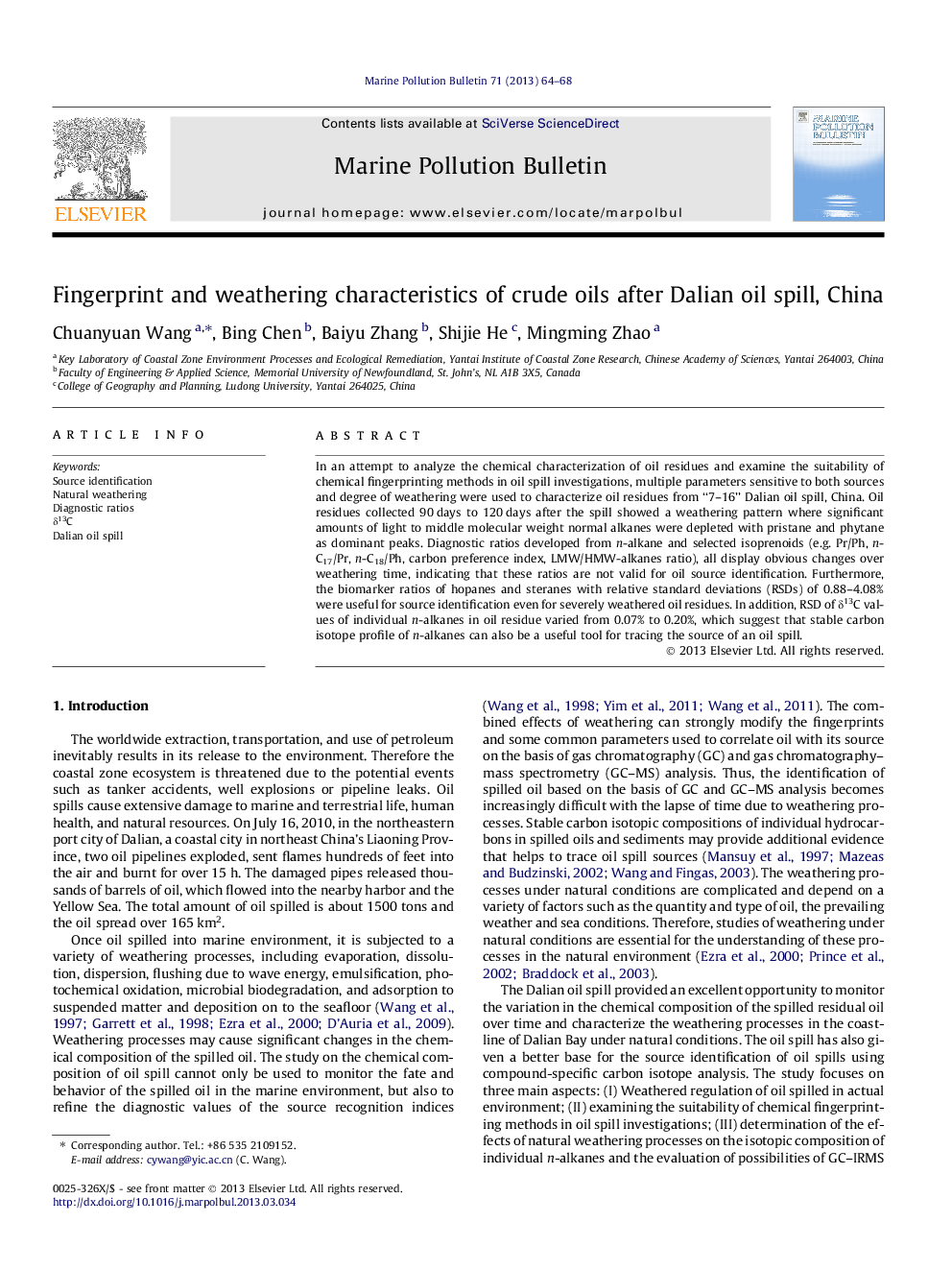| Article ID | Journal | Published Year | Pages | File Type |
|---|---|---|---|---|
| 6358963 | Marine Pollution Bulletin | 2013 | 5 Pages |
Abstract
In an attempt to analyze the chemical characterization of oil residues and examine the suitability of chemical fingerprinting methods in oil spill investigations, multiple parameters sensitive to both sources and degree of weathering were used to characterize oil residues from “7-16” Dalian oil spill, China. Oil residues collected 90 days to 120 days after the spill showed a weathering pattern where significant amounts of light to middle molecular weight normal alkanes were depleted with pristane and phytane as dominant peaks. Diagnostic ratios developed from n-alkane and selected isoprenoids (e.g. Pr/Ph, n-C17/Pr, n-C18/Ph, carbon preference index, LMW/HMW-alkanes ratio), all display obvious changes over weathering time, indicating that these ratios are not valid for oil source identification. Furthermore, the biomarker ratios of hopanes and steranes with relative standard deviations (RSDs) of 0.88-4.08% were useful for source identification even for severely weathered oil residues. In addition, RSD of δ13C values of individual n-alkanes in oil residue varied from 0.07% to 0.20%, which suggest that stable carbon isotope profile of n-alkanes can also be a useful tool for tracing the source of an oil spill.
Related Topics
Physical Sciences and Engineering
Earth and Planetary Sciences
Oceanography
Authors
Chuanyuan Wang, Bing Chen, Baiyu Zhang, Shijie He, Mingming Zhao,
